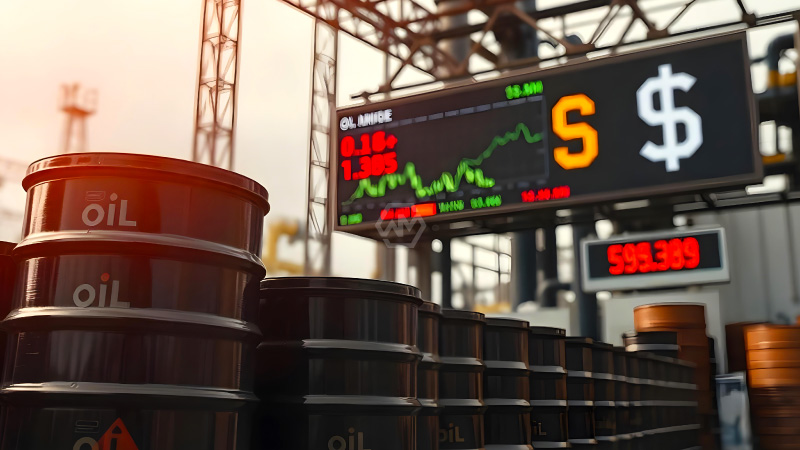- Brent and WTI crude reach three-month highs despite dollar strength.
- Saudi Arabia raises Asian oil prices; sanctions on Russia loom.
- Colder weather and refining margins drive short-term demand.
Oil prices remain resilient near three-month highs, driven by seasonal demand from colder weather and a rally in natural gas prices. Despite these gains, the strength of the U.S. dollar, which hovers near a two-year peak, has tempered upward momentum.
Geopolitical factors add further complexity to the market. The Biden administration is preparing tighter sanctions on Russian oil exports to restrict revenues supporting the war in Ukraine.
Geopolitics and Seasonal Demand Propel Oil to Three-Month Highs
Brent crude and WTI crude have reached their highest levels since October, supported by increased heating demand in the Northern Hemisphere. Seasonal weather patterns and a rally in natural gas prices have strengthened short-term oil consumption, with refining margins also seeing an uptick.
Saudi Arabia’s decision to raise crude prices for Asian buyers in February reflects an optimistic outlook on regional demand. This marks the first price hike in three months and underscores the kingdom’s confidence in market recovery, despite macroeconomic challenges.
The Biden administration is set to introduce more sanctions targeting Russian oil exports. These actions, focusing on tankers carrying crude, are part of broader efforts to limit Russia’s revenue streams amid its ongoing conflict with Ukraine. Similarly, Iranian oil production is forecasted to decline due to expected policy shifts and tighter sanctions.
Market participants are closely watching U.S. economic indicators, including Federal Reserve minutes and employment data, for clues on future energy consumption. The strong dollar remains a key factor influencing commodity prices, making dollar-priced oil more expensive for global buyers.
As oil prices navigate the intersection of seasonal demand and geopolitical developments, market volatility is likely to persist. Investors are keeping a close eye on policy changes and economic signals for direction.
“Geopolitics and economics are the two pillars upon which the energy market stands.”



